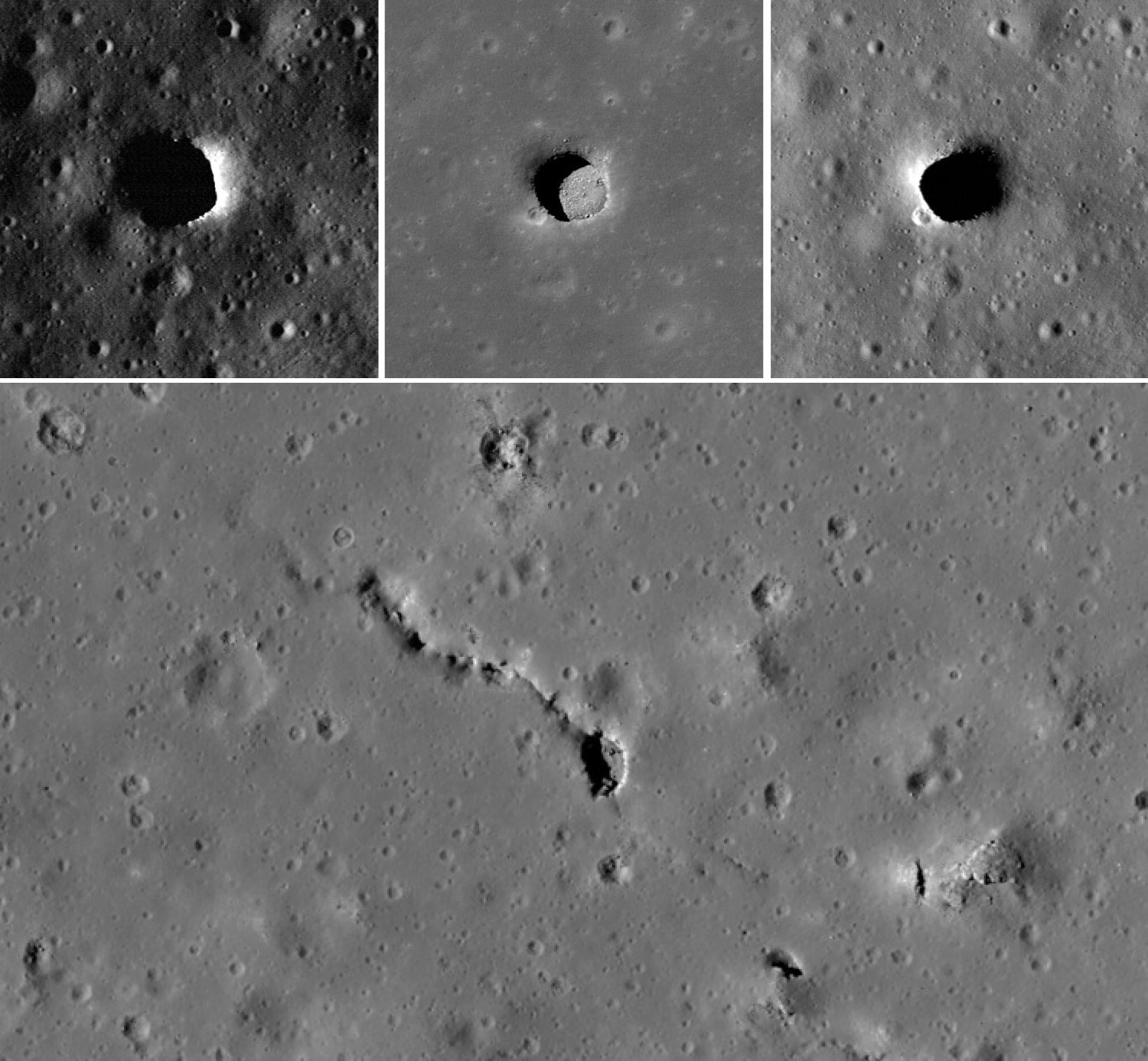Potential Scientific Significance of Moon Caves: Nasa Moon Caves

Moon caves offer a unique scientific opportunity to explore and study the lunar environment in a way that is not possible on the surface. They provide a sheltered and protected environment that can preserve ancient materials and provide clues about past or present life.
The conditions within moon caves are unlike anything found on Earth. The caves are dark, cold, and dry, and they are protected from the harsh radiation and micrometeorite bombardment that is common on the lunar surface. These conditions have allowed for the preservation of ancient materials that would have been destroyed on the surface.
One of the most important scientific discoveries that could be made in moon caves is evidence of past or present life. The caves provide a protected environment that could have harbored life, and they may contain organic molecules or other biosignatures that could provide evidence of life.
In addition to the potential for astrobiological discoveries, moon caves also offer insights into lunar history and geology. The caves can provide information about the formation and evolution of the Moon, and they can help us to understand the processes that have shaped the lunar surface.
The scientific potential of moon caves is enormous. By exploring these caves, we can gain a better understanding of the Moon, its history, and its potential for harboring life.
Challenges and Opportunities in Exploring Moon Caves

Nasa moon caves – Exploring moon caves poses significant technical challenges, including navigation, communication, and maintaining a safe environment for astronauts. Caves are often complex and labyrinthine, making it difficult to navigate and map them accurately. Communication with astronauts inside caves can also be challenging due to the thick lunar regolith that blocks radio signals. Additionally, the lunar environment is harsh and unforgiving, with extreme temperatures, radiation, and dust that can pose risks to astronauts’ health and safety.
Despite these challenges, moon caves offer a unique opportunity to study the lunar environment and search for evidence of past or present life. Caves can provide shelter from the harsh lunar environment, and they may contain preserved samples of ancient materials that could shed light on the Moon’s history and evolution. Robotic exploration of moon caves could help to overcome some of the challenges of human exploration, and it could provide valuable data to inform future human missions.
Navigation
- Mapping and navigating moon caves is a significant challenge due to their complex and labyrinthine structure.
- Various technologies, such as lidar, radar, and photogrammetry, can be used to create detailed maps of caves.
- Autonomous navigation systems are being developed to allow robots to explore caves without human intervention.
Communication, Nasa moon caves
- Radio communication with astronauts inside caves is challenging due to the thick lunar regolith that blocks signals.
- Alternative communication methods, such as laser communication or acoustic communication, are being explored.
- Communication relay systems can be used to extend the range of communication signals.
Maintaining a Safe Environment
- The lunar environment is harsh and unforgiving, with extreme temperatures, radiation, and dust.
- Astronauts exploring moon caves will need to be protected from these hazards.
- Spacesuits, habitats, and other equipment must be designed to withstand the lunar environment.
Benefits and Risks of Human and Robotic Exploration
Human and robotic exploration of moon caves offer a number of potential benefits and risks. Human exploration allows for direct observation and sample collection, but it is also more expensive and risky than robotic exploration. Robotic exploration can be used to overcome some of the challenges of human exploration, but it is less versatile and adaptable than human exploration.
The scientific value of moon caves is significant. Caves can provide shelter from the harsh lunar environment, and they may contain preserved samples of ancient materials that could shed light on the Moon’s history and evolution. Robotic exploration of moon caves could help to overcome some of the challenges of human exploration, and it could provide valuable data to inform future human missions.
The potential risks of moon cave exploration include damage to the lunar environment, contamination of samples, and risks to astronauts’ health and safety. It is important to weigh the potential benefits and risks of moon cave exploration carefully before proceeding with any missions.
The mystery of the NASA moon caves deepens, as the discovery of ancient artifacts within them sparks a global debate. Meanwhile, the controversy surrounding the Delta Airlines Palestinian flag incident continues to reverberate, highlighting the complex geopolitical landscape that shapes our world.
As the dust settles, the moon caves remain a tantalizing enigma, holding the promise of unraveling secrets that could reshape our understanding of humanity’s origins.
The possibility of lunar caves on the moon, as discovered by NASA, is an intriguing prospect for future exploration. However, it’s crucial to remain vigilant about potential threats to our planet. The recent outbreak of colorado bird flu reminds us of the importance of monitoring and responding to emerging infectious diseases.
As we venture into the vastness of space, it’s equally important to safeguard our own planet from unforeseen hazards.